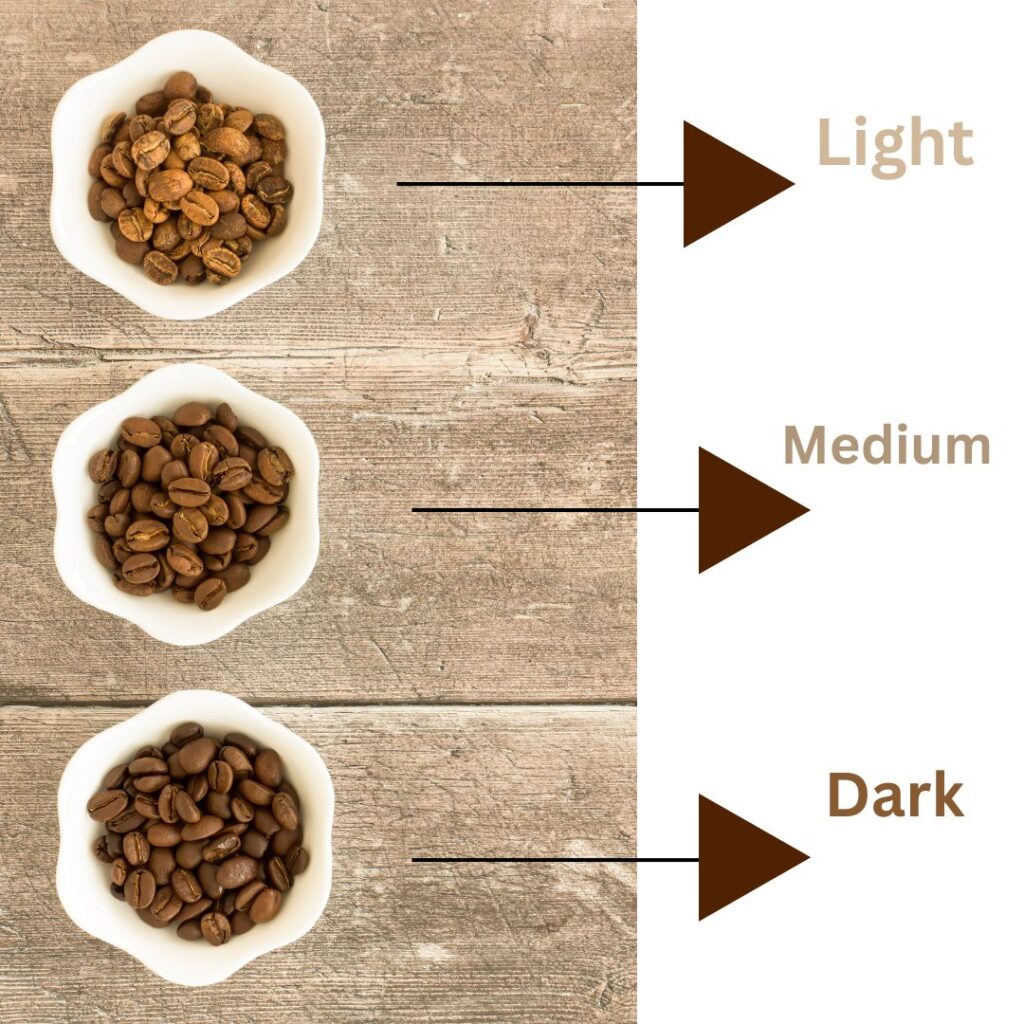
Have you ever wondered what it means when you see coffee labeled as light, medium, and dark? Well, it all comes down to the bean, where it’s from, and how it was roasted. In this guide, I will help break down the differences between these roasts and where they come from, so you can enjoy what’s in your cup.
Coffee Origins
The origin of coffee around the world has shaped the way it tastes. Ethiopia is known as the birthplace of coffee, but it has other origins in Africa, Asia, and South/Latin America. These diverse regions of beans also create a diverse taste. Some examples of different flavor profiles based on origin include:
- Ethiopia: Floral & Citrusy
- Columbia: Fruity
- Brazil: Chocolatey & Nutty
- India: Fruity & Spicy
These differ due to altitude, climate, soil, and processing methods, which can create light or complex flavor profiles.
Roasting 101
Knowing the roasts is the first step to success—especially when it comes to caffeine intake. Trust me, you will want to understand the differences between light, medium, and dark roasts. If you had to take a guess, which roast do you think would have the most caffeine? You guessed it… the light roast. The lighter the roast, the more caffeine, but let’s get more into the differences of the roast levels.
There are three major types of roasts, which are:
- Light Roast
- Medium Roast
- Dark Roast
Coffee beans start out as little green seeds. To make them into the beans we know and love, they need to be roasted. Coffee beans are roasted at very high temperatures that range from 356 to 482 degrees Fahrenheit. Here’s a quick breakdown of the roast levels and their usual temperatures.
Light Roast
- 356-401 degrees Fahrenheit
- Roasting progresses to “first crack.”
- typically light brown
- Bright flavor
Medium Roast
- 410-428 degrees Fahrenheit
- Roasting progresses past “first crack.”
- Most popular roast level
- Balanced and rich flavor develops
Dark Roast
- Temperature can exceed past 482 degrees Fahrenheit
- Roasting progresses to the “second crack.”
- More bitter
- Smoky taste
Now that you know all about the beans, roast levels, and origins, you can try out these different roasts and see the flavor profiles come to life!
